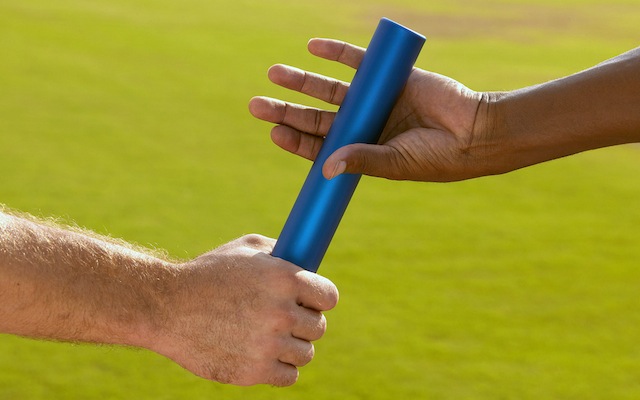When I talked with my friend, the newly diagnosed Type I Diabetic, Suzie, and her husband about the tests to take to figure out the diabetes, I had brought along my own lab results, from when I was diagnosed in 2005. But before we compared my initial tests with hers, I got to hear about how much skepticism Suzie’s endocrinologist was sharing.
WHY GET AN INSULIN TEST?!?!?
“Insulin levels!!!” The endocrinologist had scoffed. “Checking those for you will be totally meaningless!”
This made all of us feel puzzled and abashed, because the maverick doctor that all three of us know is a big fan of having insulin levels checked.
“Well, in years past, it was harder. But these days insulin CAN be measured,” I said, “because the quality of lab tests has gotten more precise. Though you have to choose a dependable lab. I hear that NAME, NAME, and NAME are pretty good. And for my results, they always sent them up to Mayo’s clinic.”
I thought about the other reasons why some doctors insist that it’s idiocy to try–insulin levels simply can’t be measured. One common complaint involves the fact that the body squirts out insulin in such tiny puffs, and so frequently, and in response to so many things. A healthy body releases a microscopic eyedropper of internal insulin roughly around once every 7 minutes. Once it the bloodstream, it degrades pretty quickly. This allows for marvelous fine-tuning of the insulin levels. But it’s also such a pain to try to measure, since the system is so fine-tuned and delicate. Among lab mice, for instance, insulin levels can leap up briefly when the rodents are simply thinking that it’s time to be fed. And the same’s probably true with other creatures, including humans.
“You can always get a reading that’s higher than usual when someone’s excited or stressed,” I said. “But the worry with you is that you’re not producing ENOUGH insulin. So if you happen to smell food, and you’re hungry, try as you might, your insulin’s probably NOT going to spike. There’s not enough insulin FOR it to spike! So it’s actually likely to be a more valid reading than it is in someone who has a more robust pancreas”
We all nodded our heads sagely and sadly, thinking of a poor pancreas that’s too worn out to give an insulin spike. This also gave me time to remember another reason why an insulin level might be called “meaningless” by a doctor.
“Another issue with insulin is that in most people, insulin levels are at their lowest in the morning,” I continued, “and particularly before eating breakfast. But when a person does start to eat, their insulin levels can rise at a variable rate. So doctors feel frustrated trying to something consistent involving that rising rate.”
I thought about what I had just said, and I pictured the stock market graphs during a trading day when everyone’s pumped up or jittery50 points up, 100 points down, 80 points up. That’s sort of how I picture the initial rise of insulin right after a meal. Variable. Very, very variable. “However,” I said, after mentioned that, Around an hour after a meal, while you’re still digesting food, the insulin levels tend to hold much steadier and be more consistent. So if you do this two-hour protein-challenge test, Suzie, you’ll testing the insulin levels at the one hour and two hour marks, and it’s going to be a steadier reading.
Suzie thought about this, then asked a common question. “But why get anything besides the fasting insulin level? Won’t that tell us all enough?”
“Not really,” I replied, on more certain footing now. You see, when a pancreas is kind of sputtery, all kinds of readings can be deceptive. For instance, if your insulin levels are very low in the morning, and your sugars are incredibly high, then obviously, you’ve got a problem. But it’s still not the total picture. After all, there are totally healthy people with nice, low blood sugar levels and also very low insulin levels.
In fact, that’s how my insulin levels were when I first went in for testing. Very low in the morning, when my blood sugars were also low. This led the doctors to guess that my pancreas was humming along just as it should. “However,” I said, thinking about my own situation, “a pancreas that’s close to failure can reveal its problem better during some kind of food challenge, because if the levels of insulin DON’T rise when food is introduced, that means the poor thing’s already red-lining. Even when there’s no sugar present, it’s working as hard as it can. That information can be a super strong warning sign that you have to be especially nice, to reduce the chance that you’ll do more to burn your pancreas out.”
We thought about this issue as well, but it still didn’t seem quite enough to say about insulin. Then Susie’s husband snapped his fingers. “Of course!” he said. “Now I remember. Suzie, honey, remember that your endocrinologist is saying you don’t need an insulin test because you’re already injecting some insulin.”
“Oh, that’s right!” Susie said. “Isn’t that right? No one can tell the difference between injected insulin and what the body makes? Which is why the results of any insulin test meaningless.”
Now it was my turn to be perplexed. I knew that our friend, the maverick doctor, wants everyone diabetic to have an insulin test. But there’s that confounding problem for injecting diabetics. You see, diabetics often inject themselves with two kinds of insulin. One is a slow-acting form (often Lantus) that they inject at the beginning of the day. The other is less commonly used—it’s a faster acting insulin for taking just before a meal. It’s peak of action happens much faster, and it leaves the body a little quicker, too . . . for instance, in roughly 6 hours, rather than 24. So one or both of these insulins can be going through the bloodstream of someone who’s injecting, and the way they work is much different from those eyedrop sized squirts of body created insulin, that happen roughly every seven minutes, and tend to leave the body just as fast. In contrast, Throughout the day, from a single injection site, the manufactured insulin from a pharmaceutical vial seeps slowly into the blood supply to provide at least some insulin for many hours. The rate at which it gets absorbed varies from person to person, and the amount of time it’s effective varies, too. But while that injected insulin is still hanging out, it’s hard to tell the difference between that kind of insulin and what the body makes. And this was pretty troubling. Had our friend, the maverick doctor, forgotten this dilemma involving injecting diabetics?
“But sweetie, I remember now,” Suzie’s husband said. “It’s coming back to me from our conversations with my friend. He wants you to know your TOTAL insulin. Both what you’ve injected and what you’re body’s making. That way, you’ll have a better idea of how much of your problem involves making too LITTLE insulin, and how much involves your cells being insulin resistant.”
“There’s something to that,” I said, feeling good again. “You see, some people with high blood sugars actually make huge amounts of insulin. Maybe ten, maybe 100 times more insulin than my pancreas generally produces. Yes even with all that natural insulin, they may still be injecting MORE insulin. That’s because their cells have gotten ‘hard of hearing’ when it comes to listening to the instructions being shouted at them to “take in more sugar.!’ And the more insulin they inject, the more the cells resist the instructions of insulin. That’s a condition called, “insulin resistant.” And it’s a clue that your problem can be addressed, in part at least, by working to help your cells become more sensitive again. When a person’s insulin resistant, it’s generally called Type II diabetes, and that’s a fairly easy condition to reverse, in fact. It’s more complicated to reverse diabetes when it’s a weak pancreas, which is also known as Type 1 diabetes.
“Hmm,” said Suzie. “My endocrinologist has been wondering if I’m a little bit of both. That my cells are a little bit insulin resistant, and my pancreas is also a little bit weak. Maybe taking this test will help me find out.”
She wrote down to take the insulin test.





